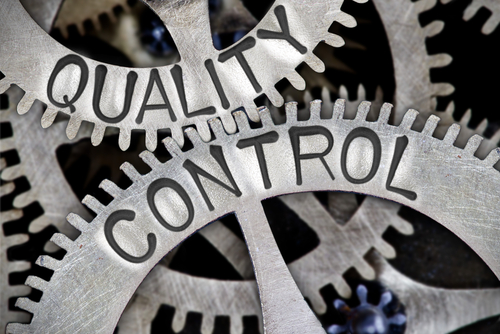To ensure that your call center is functioning optimally and efficiently, as a manager you need to be constantly engaged with what your agents are doing. If you wait for biannual or annual performance reviews to evaluate your agents’ performance and offer advice on how they can improve, you’ve let way too much time pass during which you could have been improving your customers’ experience. But if you have effective quality control processes in place, maintaining the quality of interactions between agents and customers will be effortless. Here’s how to get these processes set up and how to maintain them.
The first and most important step is articulating and defining the metrics you are going to be measuring and that you want your agents to be striving toward. Making these goals very clear will give agents something to work toward on a daily basis, helping them stay on track and providing quality service. While you can measure as many metrics as you want, you should pick just a few that are the most important that your agents should be keeping top of mind 24/7. Some of the most common ones for inbound call centers include customer satisfaction, first call resolution, average wait time and average call time.
Once you have those metrics in place, you need to be ready to act on and respond to how your agents do or don’t meet them. If agents are doing an exceptional job and consistently meeting goals, make sure to offer positive feedback and reward quality performance. Agents need to know when they are doing a good job, especially when people are working remotely from different locations. Encouragement and recognition can go a long way to maintaining optimal performance.
On the flip side, you also need to be ready to act if agents are consistently falling short of meeting goals—and this action needs to be happening on a regular basis in real time. It could be something as simple as offering feedback and reinforcing the existing processes that agents need to be following or meeting with someone one-on-one to identify weaknesses in their performance that need to be corrected. Or, if you’re seeing issues across teams or across your call center, you may need to offer more trainings or courses that will help improve agents’ performance. Ongoing training is only ever helpful. It gives experienced agents a chance to keep their skills sharp and newer agents the chance to learn strategies that will make their jobs easier. Plus, it is a small investment of time and resources compared to the greater reward of helping your team reach their goals.
The final step of maintaining high quality interactions between customers and your call center is to look outward to your customers. Utilize surveys and follow up communication to elicit feedback from customers on what your agents could be doing better and how the customer experience can be improved. After all, everything you do in your call center is meant to optimize the experience of your customers and the best way to discover if you’re doing that is to ask the customers themselves.
An additional step that can help you maintain effective quality control is using a call center platform that makes it easy to create quality assurance reports and review agent performance. CallShaper is one such platform—to learn more, request a demo today.


Leave A Comment